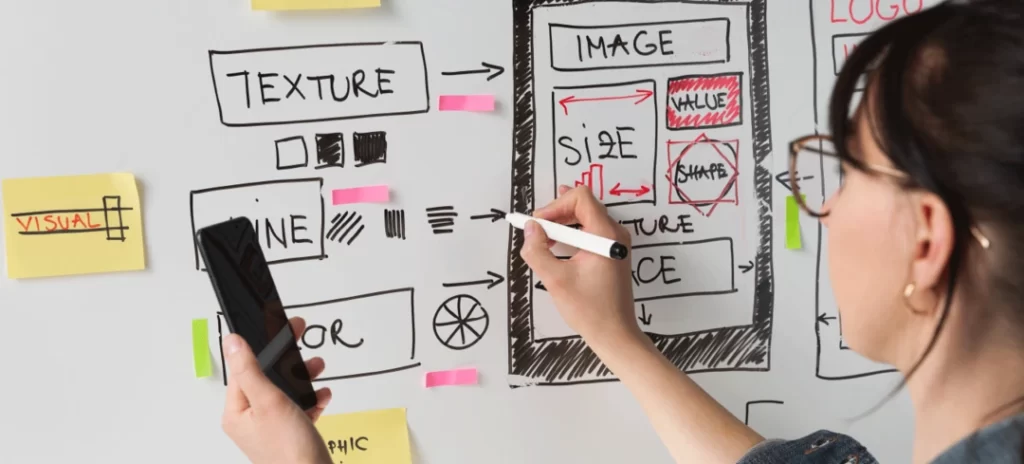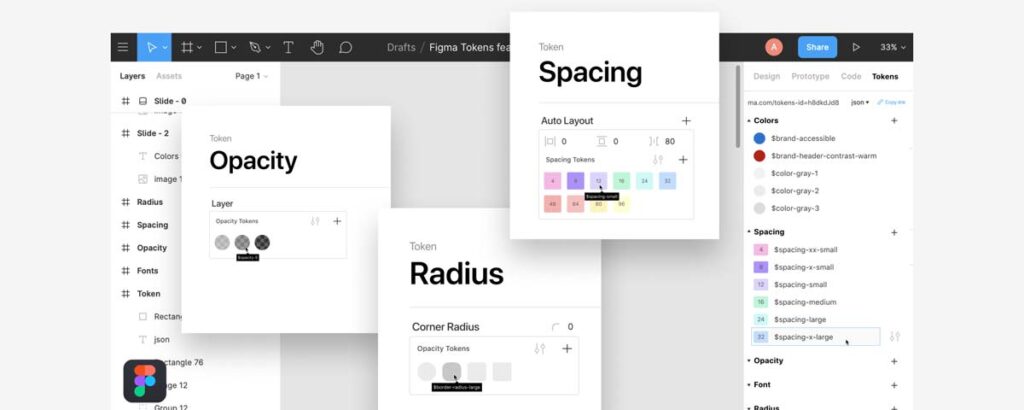How to Become a Web Designer with Zero Experience
Are you tired of your tedious 9-5 job? Have you always fancied yourself as a bit of a creative? Think you've got an eye for good design? Well, have I got the career change for you?
Web design could be your ticket to greener pastures. These days, every business needs an online presence. And who do they turn to to build their websites? You guessed it – web designers.
I know what you're thinking: “But I don't have any experience!”. Fret not, my friend. This guide will show you how to break into this exciting field from scratch.
Let's get cracking, shall we?
Table of Contents
Why Web Design?

Do you still need some convincing? Here are just a few perks that come with being a web designer:
- Creative Freedom – Put your artistic flair to good use by dreaming up eye-catching websites.
- Good Pay – With average salaries around £31k, using your right brain is not too shabby.
- Flexibility – Many web designers are freelancers or work remotely. Dream of working in your pyjamas? This could be for you.
- Demand – As the world gets more digital, the need for web design skills will be around for a while.
- Variety – From corporate sites to blogs to e-commerce stores, you'll get to design all sorts of websites.
Sounds appealing? Then, let's dive into how to become a web designer from zero.
Key Takeaways
- Understand web design's fundamental concepts and technologies, including HTML, CSS, JavaScript, responsive design, and user experience (UX) design.
- Develop your skills through practice, learning design principles, observing and analysing successful websites, and building a portfolio.
- Explore design tools and resources like Adobe Creative Cloud, Sketch, Figma, and online platforms like Dribbble and Behance.
- Consider learning front-end development and expanding your skillset with UX research, motion design, accessibility, and content management systems.
- Build your network and find opportunities through networking, collaboration, freelancing, internships, and continuing education.
Phase 1: Learn the Basics
Are you feeling clueless about web design? Start here by getting a handle on the fundamentals. Think of this as your ‘Web Design 101.
Web Design Theory
You may have artistic talent, but there's more to good web design than pretty pictures. You need to learn:
- Design principles like layout, typography, colour theory
- How to plan user-friendly navigation and information architecture
- Responsive design for mobile and desktop
- Usability best practices
That may all sound like jargon now, but don't worry – it will start to make sense once you start learning.
HTML & CSS
Every website is built using HTML (the structure) and CSS (the style). These are the building blocks you'll need to grasp:
- The essential HTML elements like headings, paragraphs, links, etc.
- CSS properties for fonts, colours, layouts, and more
- How to style and position elements on a web page
You don't need to become a coding expert right away. But getting comfortable with the basics is crucial.
Phase 2: Learn the Tools

Like any job, web designers have a toolkit—time to get familiar with the critical software and resources at your disposal.
Graphic Design Tools
Creating aesthetic visuals is part of the job description. While raw skills are essential, you'll want to learn tools like:
- Adobe Photoshop – the industry standard for photo editing and graphic design
- Adobe Illustrator – a vector graphics design program ideal for icons, logos, etc.
- Sketch – a popular alternative to Illustrator, preferred by some designers
You don't need to be a Photoshop wizard yet. Focus on the basics of these programs, like working with layers, selections, and colours, for now.
Web Design Tools
Besides graphics tools, you'll also want some web design software in your arsenal. Key programs include:
- Adobe XD – create interactive website prototypes and wireframes
- Figma – a free, collaborative interface design tool that's become hugely popular
- Browser Developer Tools – use Chrome or Firefox's built-in dev tools to inspect and edit websites
Getting dirty in some of these industry-standard tools will boost your practical skills.
Phase 3: Build Your Skills
Okay, you've got the basics down and are familiar with the tools—it's time to start levelling up your web design skills.
Learning Resources
The best way to learn is by, well, learning! Self-teaching using resources like:
- Online courses and tutorials
- Books like Head First HTML and CSS
- Blogs like Smashing Magazine
- YouTube channels like DesignCourse and Traversy Media
Resources like these will teach you UX design, colour theory, layout patterns, and UI styling. However, to become a true designer, practice is critical.
Build Practice Projects
Doing lots of it is the only way to improve web design. So start small with personal projects like:
- Design some concepts for your potential website
- Practice UX flows and wireframes using a tool like Figma
- Code simple websites from scratch using HTML and CSS
- Redesign existing sites as practice projects
Get feedback from others in communities like Reddit or classic web design forums. Start to build up an essential portfolio of your practice work.
Follow Design Inspiration
You're learning but still struggling to come up with fresh ideas? Find inspiration from the pros by:
- Following designers and design agencies on Twitter
- Browsing creative sites like Dribbble and Behance
- Looking at website showcases like Awwwards and SitInspire
- Using Instagram to find visual inspiration
With time, you'll develop a keen eye for good vs. bad design. You'll start to decode what makes an effective website.
Phase 4: Get Experience

Okay, so you've been learning for a while. You're getting better at web design. But how do you get real experience?
Find an Internship
Applying for internships is a great way to get your foot in the door. Web design agencies and companies are often happy to take on interns. This gives you:
- Real-world design experience to put on your CV
- A chance to work alongside professional designers
- Exposure to the daily duties and processes of the job
- The potential to get hired if you impress
If you're struggling to get an internship, having personal projects on your portfolio can land you some freelance work.
Phase 5: Specialise & Niche Down
You're on the right path, but how do you stand out? It's time to niche down and specialise.
Pick a Specialisation
You can't master everything in web design, so pick a specialisation or two. Popular options include:
- Visual/UI design – Focusing on aesthetic and visual user experience
- User experience (UX) design – Prioritising user research, testing, navigation, flows
- Front-end dev – Focusing more on the coding side and advanced skills in HTML/CSS/JavaScript
- Accessibility – Specialising in requirements around disability access, colour contrast, etc.
By honing in on an area, you can get more profound expertise and stand out more to potential employers.
Study a Niche
Whatever focus area you choose, really go deep. For example, if you specialise in UX, constantly learn about:
- User research
- Information Architecture
- Accessibility
- Usability and testing methodologies
- Psychology and behaviour
Or if you niche down into UI/visual design, you might focus intensely on:
- Colour theory
- Typography
- Layout and grid systems
- Branding and identity systems
- Animation and micro-interactions
Become the go-to expert in your specialisation by reading blogs, watching videos, and getting hands-on experience with personal projects.
Focus Your Portfolio
Once you've carved out a niche, showcase that specialisation in your portfolio. For example:
- If you're a UX specialist, showcase research, flows, prototypes
- For visual/UI designers, use your portfolio to flaunt your aesthetic chops with mockups and creative comps
- As a front-end dev, add code snippets and demos to display your coding knowledge
Your portfolio should reflect the type of web designer you want to be and the services you plan to offer.
Network, Network, Network

You can't become a professional web designer sitting at home alone. It's time to get out there and start networking!
Online Communities
The internet is already a great networking resource. Get active in relevant online groups and forums like:
- Reddit's r/web_design and r/webdev communities
- Web design forums like Sitepoint and Reddit Web Design
- Design communities on Facebook, Twitter, and Instagram
- Job boards and sites like Dribbble
Be active, share your work, get feedback, and connect with other designers and potential employers.
In-Person Events
Look to attend conferences, meetups, networking events, or workshops related to web design. This can help you:
- Meet other designers and industry professionals
- Get advice and feedback on your work
- Learn directly from experienced designers
- Hear about potential job openings or freelance gigs
- Make valuable business connections
Events like these are happening somewhere near you. Check local listings in cities like London, Manchester, Edinburgh, etc.
Referrals & Word of Mouth
As you build relationships and connections, it's critical to leverage referrals and word of mouth:
- Tell everyone – friends, family, etc. – that you're looking to become a web designer
- Ask people in your network to refer you to contacts in the industry
- Ask past clients or employers to write you recommendations and referrals
- Follow up regularly and stay in touch with your new connections
You increase the odds of finding opportunities by leveraging personal and professional referrals.
Build Your Brand

You've got the skills and connections; now you must promote yourself! It's time to build your brand as a web designer.
Design Your Website
As a web designer, having your personal portfolio website is essential. This shows off your abilities and serves as a self-promotion tool. Things to focus on:
- Professional design and aesthetic to showcase your UI skills
- Intuitive UX and navigation structure
- Case studies, projects, and samples of your best work
- Clear information about your services, specialisation, and value proposition
- Links to showcase work on platforms like Behance and Dribbble
- Testimonials from past clients, professors, etc., to build credibility
Your website is your virtual business card. It will be vital in landing clients and jobs.
Leverage Social Media
Beyond your portfolio, use social platforms to build your brand presence:
- Create profiles on Dribbble and Behance to showcase visual design work
- Post photos and design inspiration on Instagram
- Build a following on Twitter by sharing knowledge, giving advice, and networking
- Optimise LinkedIn as a hub to connect with employers and promote your brand
- Start your blog or YouTube channel to educate and build authority
Putting yourself out there in social spaces will increase your visibility and opportunities.
Freelance & Self-Promotion
Don't just wait for opportunities to come to you. Promote yourself actively:
- Start freelancing on sites like Upwork to build up experience and reviews
- Comment on relevant forums and subreddits, showcasing your abilities
- Write guest posts for web design blogs like Smashing Magazine
- Look into local, offline self-promotion methods like…Google it!
The more you put yourself out there, the more opportunities will come.
Challenges and Solutions
As a beginner in web design, it's common to feel like an impostor, doubting your abilities and questioning your worthiness. This feeling, known as imposter syndrome, can be a significant hurdle. Still, it's essential to recognise that it's an everyday experience shared by many professionals, even those with years of experience.
To overcome imposter syndrome, it's crucial to acknowledge your progress and celebrate your wins, no matter how small. Keep a record of your accomplishments, whether completing a tutorial, mastering a new design technique, or receiving positive feedback from a client. Surround yourself with a supportive community of fellow designers and mentors who can provide encouragement and guidance.
Everyone starts somewhere, and the web design industry is vast and ever-evolving. Embrace the process of learning and growth, and don't let self-doubt prevent you from pursuing your passion.
Dealing with Rejection and Criticism
As a web designer, you will inevitably face rejection and criticism at some point in your career. Developing a thick skin and learning to handle these challenges constructively is essential.
Don't take it personally when faced with rejection, whether it's a job opportunity or a client project. Instead, use it as an opportunity to reflect on your skills and identify areas for improvement. Seek feedback from the rejecting party, if possible, and use their insights to refine your craft.
Criticism can be challenging, but it's often a valuable learning experience. Approach it with an open mind and a willingness to grow. Consider the feedback objectively and determine if there are valid points that you can address to enhance your designs. If the criticism is not constructive, learn to let it go and focus on the positive feedback that will help you progress.
Remember, rejection and criticism are part of the journey. Use them as stepping stones to becoming a better web designer, and don't let them discourage you from pursuing your goals.
Staying Motivated and Avoiding Burnout
Web design can be demanding and sometimes stressful, especially when starting and trying to establish yourself. It's essential to prioritise your well-being and avoid burnout, leading to decreased productivity, creative blocks, and health issues.
Maintaining a healthy work-life balance is crucial to stay motivated and avoid burnout. Set reasonable boundaries and learn to say no to projects or commitments that might stretch you too thin. Take breaks, engage in hobbies and activities outside of work, and surround yourself with a supportive network of friends and family.
Consider taking on projects that excite you and align with your interests, as this can help fuel your passion and creativity. Celebrate your accomplishments and milestones, no matter how small, and remember why you started this journey in the first place.
If you struggle with motivation or burnout, don't hesitate to seek help from a mentor, a therapist, or a support group. Your mental and physical well-being should always be a priority.
Conclusion
There you have it – a roadmap for beginners to launch a career in web design. I'll be honest: it will be challenging – learning web design takes real commitment.
But with the right approach to learning, building skills, getting experience, and relentless self-promotion, you can make your dream of becoming a web designer come true.
It's all about consistent effort over time. Dedicate yourself to studying every day. Build up your portfolio bit by bit. Network and make connections at every opportunity.
Remember, having no prior experience is not a barrier. This industry is entirely of self-taught designers. If you apply yourself and follow the steps I've outlined, you, too, can join their ranks.
The path ahead won't always be smooth, but the rewards will be worth it. Imagine the satisfaction of building websites for a living. The creative fulfilment, the flexibility, and the earning potential. It's all within your reach.
So what are you waiting for? Stop dreaming, start doing! Take that first step today into an exciting new career in web design. I'll see you on the other side.
Good luck!
FAQs
How long does it take to become a web designer?
There's no set timeline, but expect it to take at least 6-12 months of dedicated learning and practice before you'll be employable. Keep learning, and you'll continue developing over the years.
Do I need to learn how to code?
At a minimum, you need a solid grasp of HTML and CSS to build basic websites. JavaScript is an added advantage for more advanced front-end skills.
Can I make good money as a web designer?
Absolutely! The average web designer salary in the UK is around £30,000 per year. With experience and specialisation, you can earn much more.
Should I learn design tools like Photoshop or Figma first?
Prioritise learning the basics of HTML/CSS and design theory first. Tools like Photoshop and Figma are essential but differ from the core of web design.
Do I need a degree to get hired as a web designer?
No degree is required to become a web designer. It's a skills-focused field where your portfolio and experience matter most. Many successful designers are self-taught.
